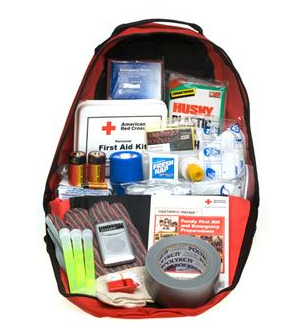As your family sits around the television in the living room, you hear a thunderous boom. With quizzical looks upon your children’s faces, you and your husband exchange glances and know you share the same thought—that ominous sound was a bomb.
Crossing the threshold of the front door, you see neighbors littering the sidewalk, gazing down the street towards downtown, with hands barely hiding gaping mouths. Your husband hands you the phone— it’s your Emergency Services Program Manager and they need you at the chapter. There’s been an explosion…
With that, the fear and anticipation perceived on the faces of her friends and neighbors became her own.
The actions of this young volunteer will undoubtedly shape the future of her community; and if by chance, unknowingly inspire other community members to better prepare themselves for when a disaster strikes. You never know what it could be next: severe storms, train derailments, massive flooding or even worse—a biological attack. We never want to consider our peaceful and happy communities being the focus of bioterrorism; but in reality, it could happen.
What is bioterrorism?
Actually, bioterrorism can be an array of events—including chemical, biological, radiological, nuclear and explosive (or CBRNE). Some examples of CBRNE events could include: chemical spills, an incident at a nuclear power plant, an aerosolized biological agent, an explosion or even a naturally occurring disease outbreak. Most disaster events involve elements of Mother Nature. Whether you face the torrential rains and high-sustained winds of a hurricane or the out-of-control carnage of a wildfire, there is one fact that reigns true for all disasters—YOU have the power to be prepared.
Both natural and human-caused disasters can occur at anytime, anywhere. What should you do to avoid falling victim to a disaster? There are three simple steps the Red Cross encourages to conquer this conundrum: Get a Kit, Make a Plan and Be Informed.
 In your emergency preparedness kit you should include items that you could use at home or could take with you in case of an evacuation. Some of the most important items that should be included are:
In your emergency preparedness kit you should include items that you could use at home or could take with you in case of an evacuation. Some of the most important items that should be included are:
- Water
- Food
- Flashlight
- Medications
- A multipurpose tool
The next step in preparing yourself for disaster is to make a plan. You should identify the responsibilities for each member of your household and plan to work together as a team. Finally, one of the most important aspects of disaster preparedness is remaining informed about the situation. You should identify in advance how local authorities will notify you during a disaster and how you will get formation—whether it is through local radio, TV or NOAA Weather Radio station/channel.
Returning home from a day of frantic phone calls and rumors buzzing around command center, the young volunteer turns on to her street. Through windows, she sees families gathered around their televisions, hoping for answers. Seeing the members of her community watching for information brings her a sense of comfort. Instead of entering into a state of confusion and panic, these people had taken the appropriate steps to becoming disaster-ready and prepared themselves physically and mentally for the aftermath of a disaster event. The only question that remains is, are you prepared?
Don’t be a victim. Be Aware. Be Prepared.
